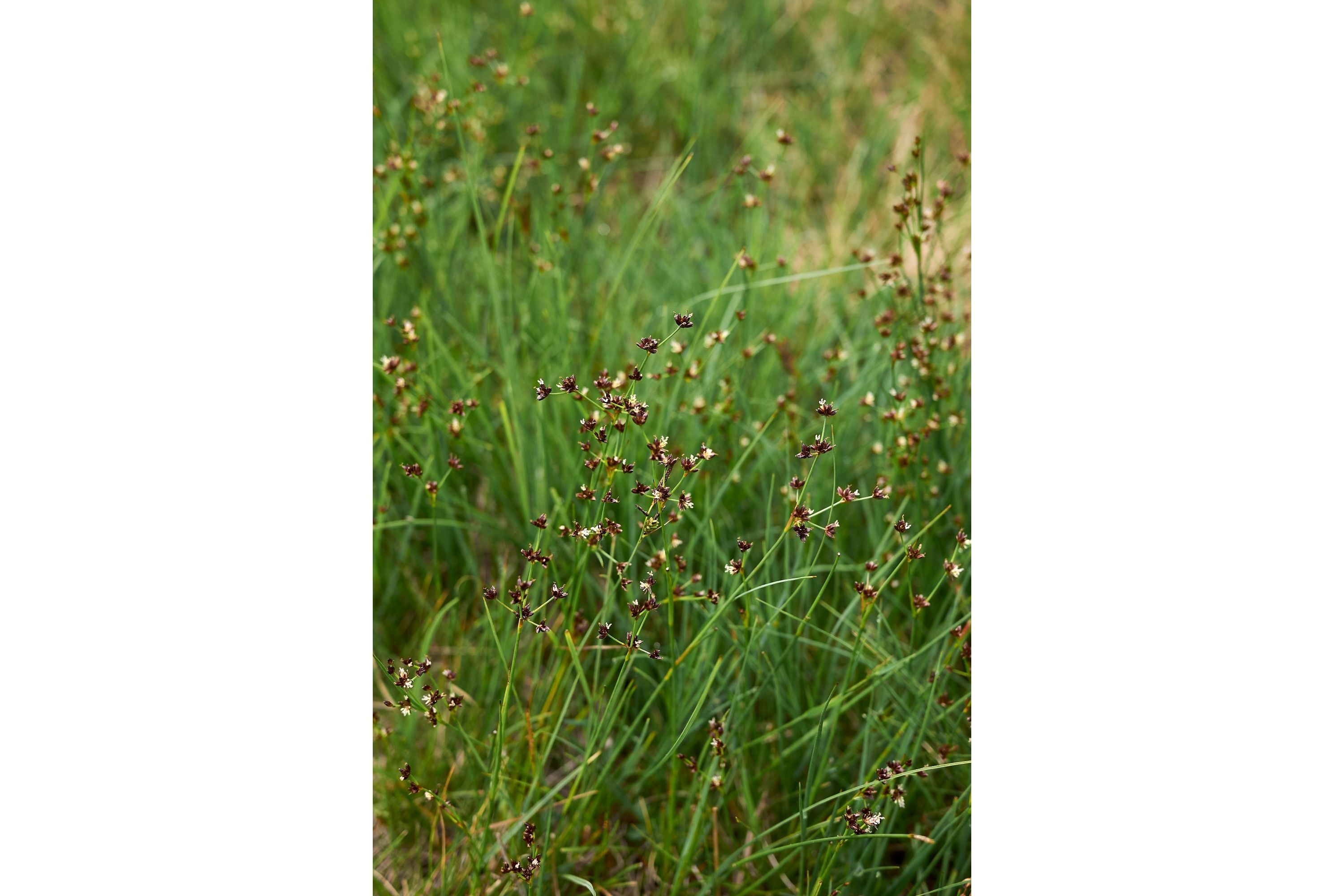Juncus imbricatus
(Juncus imbricatus)

Description
Juncus imbricatus is a plant species from the rush family (Juncaceae) that originally only occurs in South America. Juncus imbricatus is a perennial herbaceous plant. It reaches growth heights of 15 to 45 cm. It has a creeping rhizome with a diameter of 2 to 3 mm. It is covered with a filamentous, dark brown layer of sclerenchyma fibers, remains of decayed cataphylls and leaf bases. the internodesare short, the stems are therefore in dense rows. The plants form lawns. The stems are erect and 0.5 to 1.5 mm in diameter. There are 3 to 4 cataphylls per stem, which are up to 5 cm long, dark brown, sometimes yellowish brown to light green and have a rudimentary leaf blade of up to 5 mm. The blade-bearing leaves are all basal, one or two per stem and are 10 to 35 cm long. The leaf sheath is 1.5 to 6 cm long. The blade is filamentous with a diameter of 0.6 to 1 mm and is hollow. The inflorescence is terminal consists of 2 to 4 (rarely 1) unilateral cymes with 1 to 30 flowers. The lower bract resembles the basal leaves, is herbaceous, up to 8 cm long and towers over the inflorescence. It can also be shorter than the inflorescence. The other bracts are shorter, the last only about 3 mm long. Each flower is surrounded by two prophylls that are 1.5 to 2 mm long. The tepals are unequal, lanceolate, have a green midrib and maroon edges. The outer tepals are 3.5 to 5 mm long, the inner 3 to 4 mm. The six stamens are 1.7 to 2.1 mm long, the stamens are straight and 0.8 to 1 mm long. The capsule fruit is ellipsoidal, blunt to truncated at the top, triangular with slightly concave sides. It is 3.5 to 5 mm long and 1.8 to 2.5 mm wide, chestnut brown and glossy when ripe, thick-walled. The capsule is triple. The seeds are broadly ovate, asymmetrical, grooved and brown. Juncus imbricatus occurs mainly in South America. In the Andes, the area extends from Colombia to northern Argentina. It is also found in Concepción in Chile, in Corrientes in Argentina, in Uruguay and in the highlands south of Buenos Aires. There are still disjoint occurrences in Mexico, in the Cape region of South Africa, in Australia and in Portugal. In Portugal it is likely to be neophytic deposits. In the Andes it often grows as a weed on roadsides and abandoned fields at 2500 to 3800 m above sea level. Unusually for a representative of the rushes, the species usually grows in very dry locations.
Taxonomic tree:







